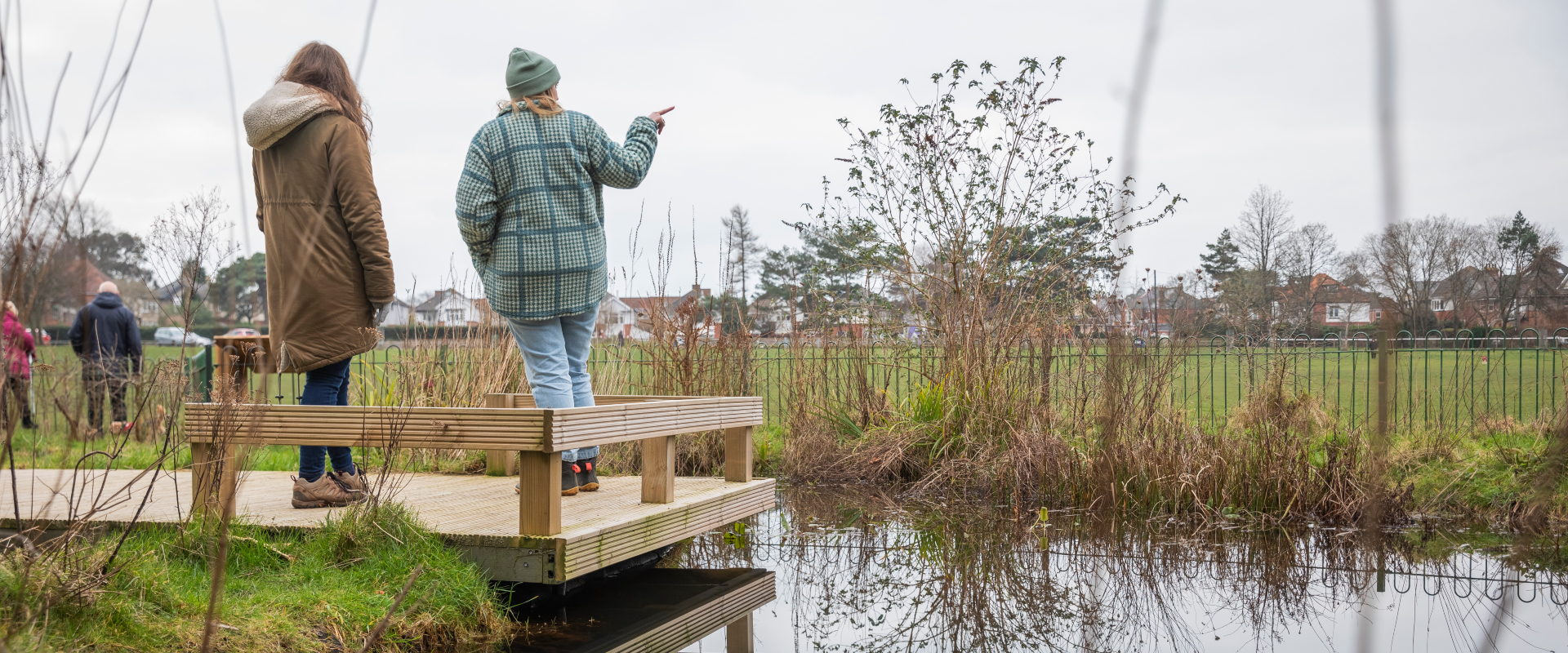
Unlock finance for green and blue spaces
12-02-2025
Get started with...
Case study
Guidance
©National Trust Images / James Dobson

12-02-2025
Get started with...
Case study
Guidance
©National Trust Images / James Dobson
The finances needed to create and care for nature-rich, climate-resilient towns and cities can feel like a barrier. Local councils and grants simply cannot cover all the costs. But there are solutions out there, that will help ensure everyone has green space close to home.
Towns and cities across the UK are testing new ways to diversify and innovate their funds for urban green and blue infrastructure. From tapping into mandatory requirements like biodiversity net gain (BNG) in England (read more about BNG), to gaining a more sophisticated understanding of the benefits nature can bring to a place and which organisations are open to investing in them.
The key is to link the benefits and outcomes with your wider strategic landscape, and build the capability to test the approaches that best support this.
And it’s not just about the money. Healthier green and blue spaces mean healthier communities, where everyone can feel the benefits.
In this article, the team at Plymouth City Council explain how they are achieving this as they celebrate an important milestone in their journey towards a new, blended finance model for nature.
There are also tools and guides designed to get you started on a finance journey of your own.
“We went down rabbit holes and came back up again...nobody else needs to do that!” - Kat Deeney, Head of Environmental Planning at Plymouth City Council.
Discover how Plymouth is redistributing private money for public benefit, as the UK’s first council to set up a habitat bank. This video explains how they are securing new investment in the city’s green and blue spaces through a council-owned company called Ocean City Nature. In turn, the ‘banked’ biodiversity units they create will enable developers to deliver mandatory BNG requirements, in a way that benefits people and nature in Plymouth.
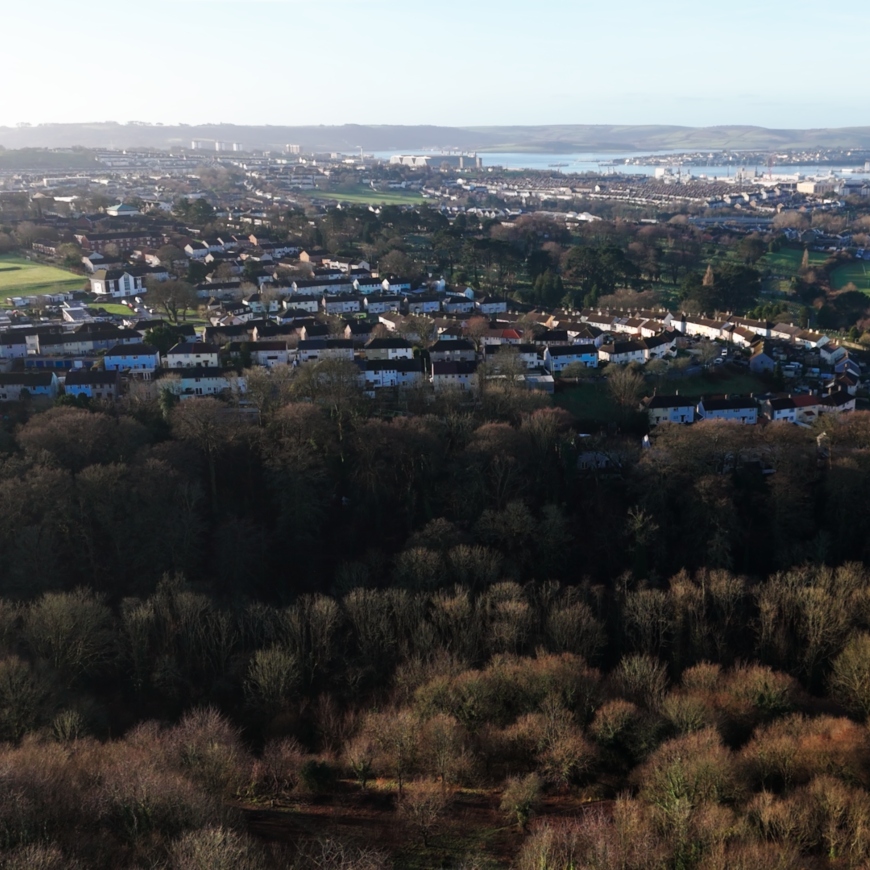
Local authorities in England are starting to use habitat banking as an innovative way to generate new funding that can be used to restore nature and benefit people and place. Here's how it works in four steps.
Learn how to start habitat banking in your community, from building your team to setting up a habitat banking vehicle.
It typically takes around 18 months to set up a habitat bank. Whilst there are lots of steps and some might feel complicated, it is possible to achieve with dedicated time and resource. We’ve set out the steps in logical order, but habitat banking isn’t a linear process. You may have to go back and revisit some of the steps along the way.
Habitat banking provides a way for landowners – in this case local authorities – to create or restore a habitat in advance and “bank” the resulting biodiversity units.
These units can then be purchased by developers seeking to comply with the mandatory 10% net gain. The sale of biodiversity units means the investor who provided the finance gets their initial investment back with interest and information about the environmental impact of their funding.
The sale of biodiversity units also provides a critical revenue stream for local authorities to maintain the newly restored or created habitat for a minimum of 30 years, and quite possibly even longer.
You will need people with dedicated time for this work. They will need to be adept at bringing change, working across departments and engaging partners including Executive Officers and elected officials. It is innovative work, so the team will learn new concepts, some financial jargon and be comfortable with not having all the answers upfront.
Your internal team will likely include representatives from finance, legal, housing, planning, strategic and operations green estate. This work could inform planning guidance issued to developers and link to Local Nature Recovery Strategies, so understanding this context is important.
The team should know how land is currently used and be able to understand the opportunity for change. Conservation management skills and knowledge of ecological assessments will mean they can accurately cost habitat restoration, public access improvements and maintenance.
Your core project team will want to bring in specialist external advisors, too. These will include an appropriate external finance organisation who is equipped with the skills and regulatory clearance. They will help develop the financial model to manage risk and help you to outline your business case, establish the vehicle itself, and access investment.
You will also need legal support to help set up the habitat bank when you are ready to do so.
Piloting sites quickly helps to develop an understanding of supply and demand for biodiversity units.
Make sure you understand the land you’re working with. You don’t need granular detail at this stage, just information about where key nature sites are, their size, any designations, some level of habitat information and basic management objectives.
When selecting pilot sites consider size, number, significance, public access, and partners. Private investment is easier to attract on a larger scale. Aim for a minimum of 50 hectares in total and no less than 10ha per site. A group of pilot sites might be between 20ha and 100ha. You may want to identify more pilots than you think you need and model the costs for them, just in case one or two are not viable.
If a site is within your Local Nature Recovery Strategy, there is a multiplier effect in the DEFRA Metric for calculating biodiversity units, meaning it will generate 15% more biodiversity units.
You don’t need to have identified all the sites in your Local Nature Recovery Strategy to select pilot sites, but if you have some or can do this in parallel, it’s a good idea.
Biodiversity net gain is measured in units. A baseline will tell you how many units you currently have on the site, for comparison purposes during and after restoration. To work out your baselines, you need an ecological assessment for each site capturing the relevant data. From here you can propose how to restore the habitat and use the DEFRA metric to calculate the units – UK Hab Assessments map directly onto the DEFRA metric.
You may choose to have your ecological assessments done independently, providing additional reassurance to your future investors. You may also choose to undertake habitat assessments across all or many of your potential sites (not just pilot sites).
This will enable you to get an overview of potential available units across the city and therefore estimate revenue at a city scale over 30 years.
As part of your prep work, you need to decide how your habitat bank can help to maximise environmental, social, and economic benefits for your city or town, keeping revenue and benefits local.
An early discussion on key offsetting principles will help you to build in the elements that are most important to you.
Take a look at our suggested offsetting principles by clicking the button to the left.
Your supply is the difference between the baseline units and the number of units a site will produce after habitat is created or restored.
This part of the process is typically called ‘supply assessment’ because you work out how much improvement (measured in units) can be sold to developers. Conservation specialists will advise what restoration or creation might be possible from your baseline assessments.
In 2021, a DEFRA report suggested the market price per biodiversity unit could be between £20,000 and £25,000. Your external financial partners will keep you up to date with market prices.
Biodiversity units can be sold outside of the locality, though developers are incentivised to buy in their local area.
Understanding top level growth targets for infrastructure, transport, and housing can offer assurance that there’s enough demand in the pipeline. Especially for places seeking to satisfy all local demand, and not oversupply what might be required.
Note that if a development scheme already has permissions, it may not be required to deliver biodiversity net gain.
Also remember you are looking at longer-term demand as biodiversity units are sold any time from the third to around the fifteenth year.
It’s best to do this modelling with an experienced external commercial financial partner. Ecological expertise will already have determined what interventions should happen at each site. Now you need to know what these might cost, including restoration, maintenance and the cost of providing public access.
We suggest starting high, including all costs associated with your established priorities. You can look to reduce these costs later on if needed.
This is robust analysis and a working model that should be continuously updated for accuracy. It offers data to make decisions about which sites are viable, the best time to sell biodiversity units and to test principles and ideas. For example, it could help you to understand how many years beyond the minimum 30-year term that any endowment might cover maintenance costs.
Risk is managed partly through the DEFRA metric which includes a difficulty multiplier for habitats that are harder to restore, and a discount factor for selling units in advance of verifying the planned habitat was delivered.
Your external financial partner will further support risk management through modelling to account for changes in market prices, adjustments for inflation, operating costs for the habitat bank and building in a buffer for changes in demand.
The business case should be clear and concise, using familiar templates and protocols for internal decision-making, such as presenting options.
Focus on the decisions that need to be made to secure a mandate to progress your work rather than technicalities – you might include supporting documents that cover any technical or background reading.
As you progress your business case, it can be helpful if your external financial partner is available to answer technical questions or even co-present.
Your external finance partner should help you with the process of designing the capital and corporate structure. This involves ensuring cash flows towards your priority benefits. For example, funding for long-term maintenance.
You will also need to seek external advice on governance and which legal structure (e.g. traditional company or a charity) is best for you and any contracts you might need drafting.
Once set up, the habitat bank will need accountancy and insurance services and a bank account. Your external finance partner can then attract investors using materials compliant with the Financial Conduct Authority (FCA) regulations.
They will negotiate and close the investment deal. The habitat bank will register any sales of biodiversity units. It will monitor, report and verify compliance with the habitat management plan, submitting data to the relevant body.
This resource has shone a light on habitat banking, but there are many different types of funding for urban green infrastructure. It's important to review a variety of options and choose the best ones for your place.
The Urban Forest Accelerator project has developed a toolkit to help local authorities consider private finance options for their urban greening work. The project focussed on urban forestry, but the toolkit covers the steps needed to identify the potential benefits – or ecosystem services – of wider green or blue spaces, and understand important considerations when quantifying and selling these to buyers.
The steps are summarised in a Green Finance Flowchart, which includes recommendations for data collection processes and the expertise you may need to call on to help.
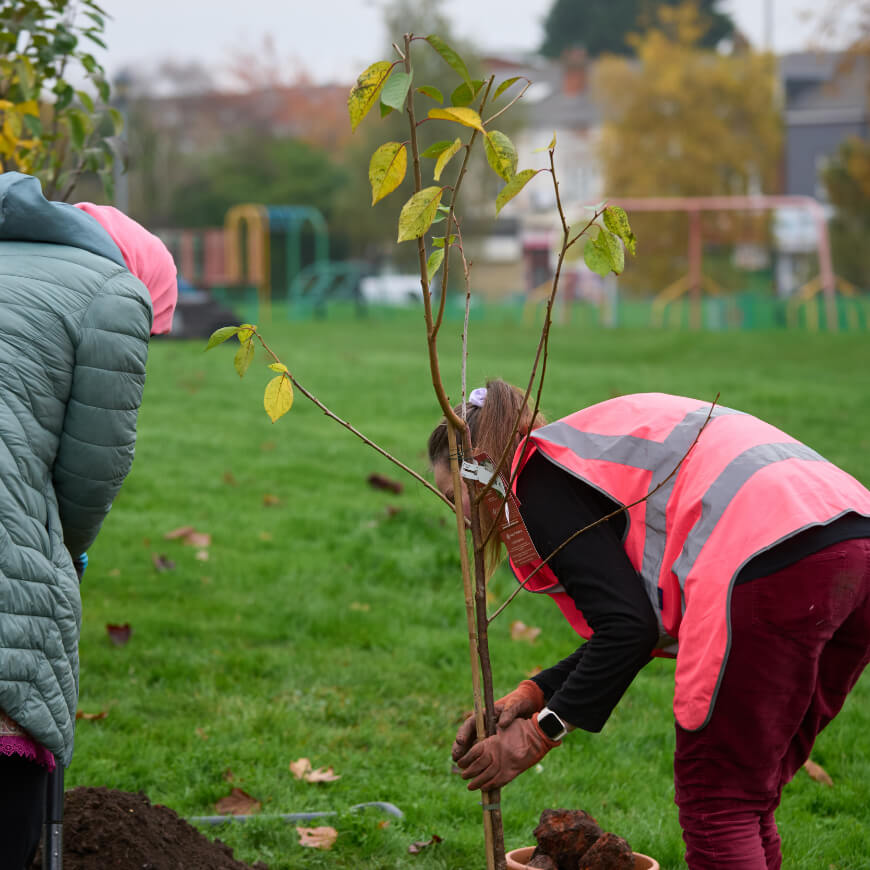
©National Trust Images / Trevor Ray Hart
Webinar 1: generating dividends for people, place and nature
Councillor Tom Briars-Delve and colleagues from Plymouth City Council discuss what led them to pursue new financial models, starting with habitat banking and expanding to other nature-based solutions. Hear about the opportunities this creates for residents, wildlife and the planet.
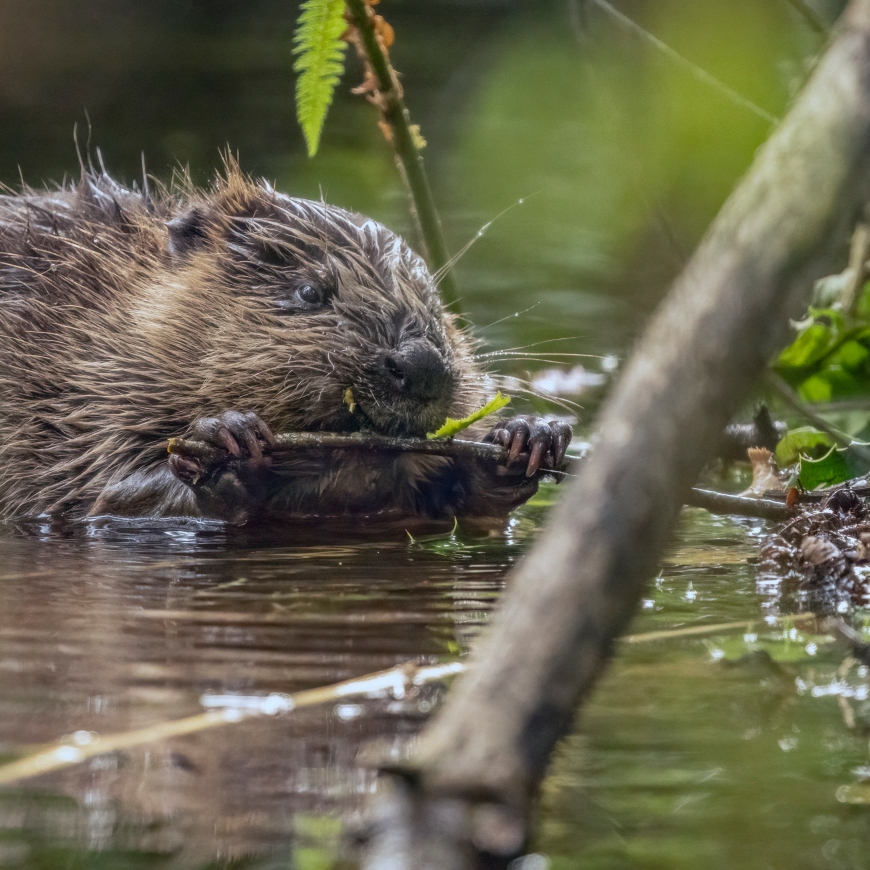
Webinar 2: more than just a habitat bank
Plymouth City Council and partners share their habitat banking investment model and discuss how to create a not-for-profit habitat bank in a local authority context.
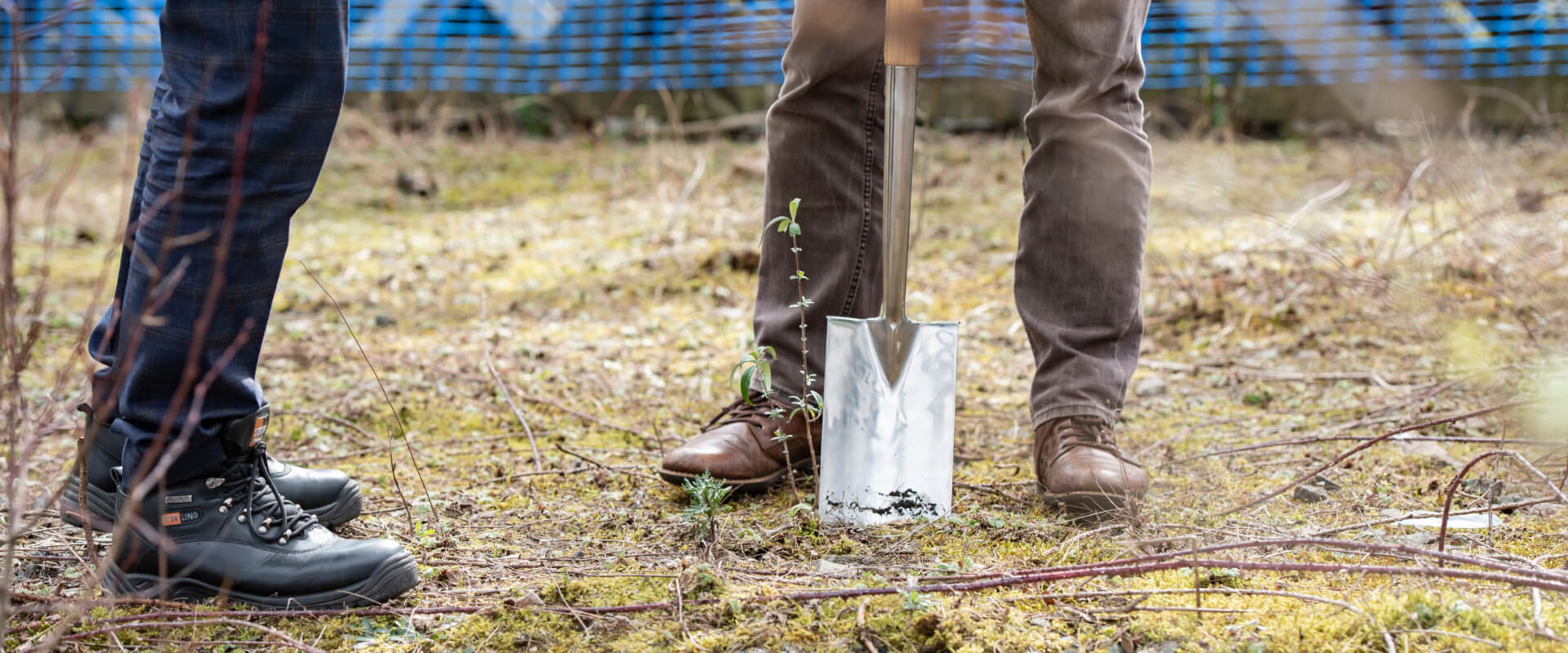
A short overview of the subject from Natural England. Familiarise yourself with the language and fundamentals around the subject matter.
Watch the videoSuggested principles to help create high quality, competitively priced BNG units. These principles have been developed and tested on offsite BNG and habitat banking projects.
Read the principlesThe Green Finance Institute tests, demonstrates, and scales the financial solutions needed to accelerate the transition to a net-zero and nature positive economy.
Visit the websiteThames21 is the voice for London’s waterways, working with communities to improve rivers and canals for people and wildlife. Discover their work to deliver watercourse BNG.
More about blue space BNGUK100 is a network of local leaders who have pledged to lead a rapid transition to net-zero with clean air in their communities.
Explore the Knowledge HubThe Forestry Commission increases the value of woodlands to society and the environment.
Forestry learning resourcesGuides, toolkits and case studies to increase tree canopy cover in towns or cities and bring the benefits of trees to all. Developed by the Community Forest Trust, the National Trust, Woodland Trust.
Visit the site